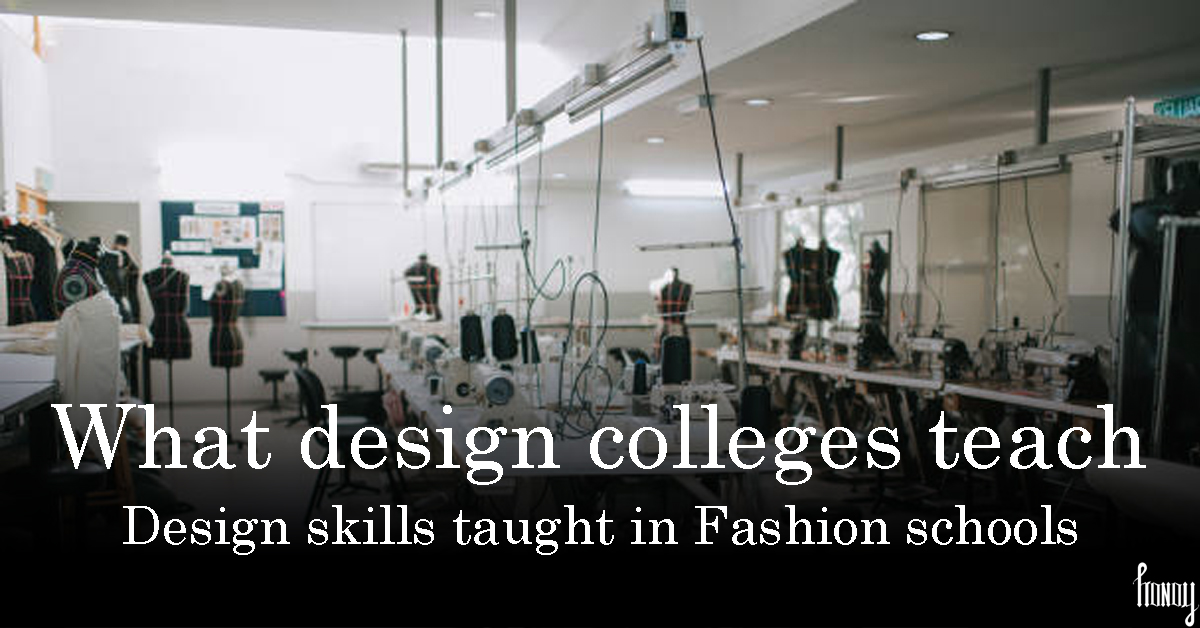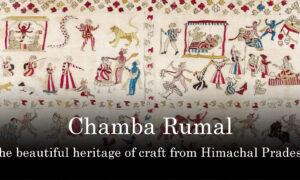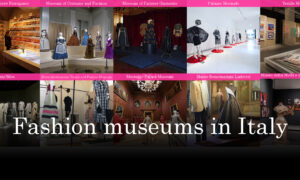Most important fashion design skills
The design skills taught in fashion schools today area major point of focus when deciding a career in fashion. Fashion schools today offer a wide variety of subjects and courses to help you prepare for the career of your choice in the fashion industry. These subjects cover a broad spectrum of technical and non-technical skills that are in regular demand in the industry.
In this post I will only cover subjects that are commonly taught to fashion (apparel) designers. Every beginner is taught a basic level of these subjects and as the student progresses, they choose their fields of specialization(s) and focus more on those areas. Now let us look at most important fashion design skills taught at the fashion schools.
Design
This is the foundation education for all designers. This is a theoretical subject which focuses on developing the aesthetic and design knowledge of the fashion students. Students are informed on inner workings of the fashion industry and how collections are researched and executed. The following are few of the most important area of study in design:
a. Principles of design
The principles of design are fundamental concepts, when followed will help you understand and arrange the elements in your design for the best desired results.
b. Color theory
The color theory is another fundamental concept where fashion students are taught how colors interact with each other in a composition and how they can be used to create visually appealing designs.
c. Research and conceptualization
For any successful fashion collection its foundation lay in strong research. Fashion students are taught various methods of researching and then how to convert all this research into concepts and inspirations for creating designs.
d. Designing a collection
Once the students are familiar with the principles of design and research, they are taught how to create a fashion collection. Collating all the material that was accumulated in the research phase is used as elements in creating trend worthy designs. I have discussed the entire process in my post ‘ design a fashion collection in 16 steps ‘
e. Fashion trend and forecast analysis
It is not always about creating new designs. There are levels in the fashion cycle that need to follow trends to make clothes for the masses. This where students are taught how to identify fashion trends that will influence the future fashion styles. Also, the forecasts that are done by the fashion industry experts, needs to be understood before creating a new collection.

Various components of the design studies include: principles of design, color theory, forecast and trends analysis, designing a collection
Fashion history
To create designs that inspire the future, students must look at the past. Courses in fashion history usually involves exploring the evolution of fashion styles throughout the world. This helps fashion students to gain insights into the cultural and historical aspect of fashion. Although the European and American histories of fashion are widely documented and taught, the indigenous history and evolution of fashion is also very crucial in understanding the mindset of the localised customer.
Textile studies
In order to transform the fantasies into realities, a designer must know and understand the fabric they need to do the magic. Understanding textiles and delving into their properties, their uses and how they will behave/interact towards various design choices is crucial for any designer’s success.
Fashion Illustration
The art of visually communicating design ideas is called fashion illustration. Fashion Illustrations are taught to sketch and render garments to convey the designer’s vision. Over time students develop their unique styles of illustrating and can go on to become professional illustrators as well. Nowadays, traditional hand drawings are simultaneously taught with digital illustrating software like Photoshop and CorelDraw.
Draping
Draping is the art of manipulating fabric directly onto a mannequin or a live model to create designs. It is a fashion skill of high importance as it is popularly used in custom designs creations and high-end fashion creation (Haute couture). This technique allows the designer to experiment with the fabric and finalize the fit and design before finalising any pattern.
Pattern making
Unlike draping, pattern making is the process of first creating templates(patterns) on paper and then cutting and stitching the garment according to the pattern. Pattern making involves accurate measurements and understanding how fabrics drape on the body. Students learn to create patterns for different clothing items.
Garment construction and sewing
Students learn to hand stitch and machine stitch fabrics and how to assemble a complete garment from drapes or patterns. This subject is crucial for designers to learn, even though they may not be stitching garments themselves, but a thorough knowledge will help them guide their own stitching teams in the future.
Surface ornamentation and creative textiles
Creativity is not just in moulding fabrics into garments but also in adorning them with various techniques and materials. Embroideries are particularly popular in surface ornamentation and designers can have specialisation depending on their interests. Similarly, manipulating fabrics to create textures and surfaces is also another way of adding a creative touch to your designs.
Fashion merchandising
If a student is interested in the business side of fashion or wishes to venture on their own in the future, then fashion merchandising is important. Fashion students will learn about, retail management, buying, inventory, visual merchandising etc., and will learn to apply these skills in real life.
Fashion technology
With advancements in technology, fashion schools offer courses in computer-aided design (CAD) software, 3D modeling, and virtual fashion design tools. For students, these skills are highly crucial in modern fashion design.
Fashion sustainability
A relatively new but again a very fast emerging and most important fashion design skills is of fashion sustainability. With sustainability becoming a significant concern of the fashion industry, fashion schools now offer courses on eco-friendly and ethical fashion practices. Students learn about the latest sustainable materials, production processes, and ethical fashion principles. Designers with a conscience are the need of the hour.
Fashion business management
The subject of fashion business management covers the management aspects of the fashion industry, including budgeting, supply chain management, and entrepreneurship. Again, like fashion merchandising, this subject is crucial for students interested in managing fashion brands or starting their own businesses.
Fashion portfolio development
In order to bring all your fashion schools education together, there are the fashion portfolios. The most important fashion design skills that is often overlooked. At the end of the courses, before students graduate from the fashion schools, they are taught to create a professional portfolio showcasing their best work over the years. A well-structured portfolio helps the students put their best work forward for potential recruiters and for securing internships and job opportunities in the fashion industry. This is a very important aspect of education for any design skills to be showcased.

History of fashion, textile studies, sustainability, cutting and sewing are some of the major areas of fashion design education
Conclusion
Now you know the most important fashion design skills taught in fashion schools. The specific curriculum can vary depending on the school and the level of education (e.g., undergraduate, or graduate programs). You can choose courses that align with your career goals and interests within the fashion industry. While it may seem a lot no, but once you start to immerse in this amazing world of knowledge, history, and skills you will be able to carve your own professional journey. So, are you excited now that you know what all you will get to learn at a fashion school. Research more about these subjects and stay tuned as we will tackle each of these in detail.





























Pingback: Valentino Garavani: The last titan of Italian fashion -5 min
Pingback: Anita Dongre : Life & Success Of Fashion Designer In 5 Mins